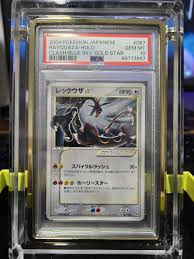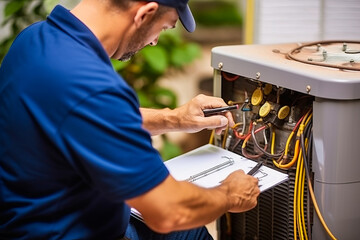A new form of digital obsession is quietly taking over collector communities. Phantom Display collectibles, as they are now being called, are invisible by default. These are digital or conceptual items never meant for physical or visual display. They exist more in theory than in view, yet their value keeps rising.
Collectors are increasingly drawn to things they cannot see. These collectibles aren’t displayed on shelves or in digital galleries. Instead, their presence is often implied through ownership metadata. The idea of owning what cannot be seen is reshaping modern collection trends.
The emotional pull behind phantom items lies in their exclusivity. Not being able to show them adds to their mystique. This taps into a psychological thrill that only owners truly understand. Some say it’s the digital version of a secret society.
Authenticity is verified through cryptographic tagging and timestamped ownership logs. While there’s no visible product, smart contracts and digital receipts prove existence. They provide bragging rights without the need for a physical object. It’s about knowing you have it, even when no one else can see it.
The appeal isn’t about aesthetics, but about narrative and meaning. Owners create stories around their phantom collectibles. These stories are passed down or shared in private networks. The value is in the tale, not the look.
This evolution started as a quiet rebellion against flashy digital assets. Bright NFTs and overstimulated visuals flooded the space. Some collectors longed for minimalism, even invisibility. That’s when phantom pieces began to grow in value and following.
One item might be a timestamped moment linked to a private emotional experience. Another could be a coded sound never to be played aloud. These items live in encrypted vaults, unlocked only by those with the right keys. They represent silence in a world full of digital noise.
Collectors hold them like whispers between friends. Some pieces are bound by smart contracts that prevent public disclosure. Breaking that code could void ownership entirely. Secrecy is part of the thrill and the risk.
Unlike conventional assets, their value isn’t subject to visual trends. They age based on memory and personal relevance. An item from a forgotten forum may resurface with increased emotional capital. These cycles are unpredictable but deeply engaging.
Communities have formed around the concept of nothingness. They share encrypted discussions about assets that nobody has ever seen. In those circles, mystery is currency. The less you reveal, the more respected you become.
Phantom display collectibles have spawned new etiquette in digital trade. Ownership is often verified via indirect communication. This prevents public indexing and preserves mystique. Traders speak in code, acknowledging only the existence of the contract.
New artists now create works that are never rendered. They describe their pieces but never show them. Buyers get the concept, not the visualization. This challenges what art truly means in a data-driven society.
The market has created tiers for degrees of visibility. Some collectibles are semi-phantom, shown only once before being hidden forever. Others are permanent voids, known only to one individual. That scarcity pushes up desirability.
Some buyers even destroy the only key to access a phantom collectible. This creates a permanent unknown—owned but forever locked. It’s the ultimate power move in digital ownership. The mystery becomes eternal and priceless.
Digital minimalism has collided with psychological ownership. There’s a rush in holding something others can’t even perceive. This is no longer about admiration but about connection. The object becomes a part of the self.
Technology enables these invisible layers of meaning. Smart contracts, private chains, and encrypted metadata are the new display cases. No images, just verified data. That data becomes the artifact itself.
Some platforms have created environments where phantom assets are whispered in coded language. Entire databases list items without images or descriptions. Ownership links only to those who are meant to see. The rest is blank space.
Collectors say these items let them escape the overstimulation of modern screens. There’s no need to scroll or view. The absence is the point. It’s a return to inner experience over external validation.
Artists now embed emotions into contracts rather than pixels. A heartbreak, a joy, a dream—recorded without visuals. Buyers decode them with their own stories. Meaning becomes deeply personal.
Phantom display collectibles also challenge copyright norms. What happens when an asset isn’t shown but only implied? How do you copyright a ghost? New legal questions arise, and old frameworks no longer apply.
Investors are now considering phantom portfolios. These include both visible and invisible digital assets. Value is assigned based on secrecy, concept, and originality. The more abstract, the higher the potential return.
Marketing such collectibles is a paradox. You can’t show what you’re selling. Instead, campaigns rely on symbolism, metaphor, and mystery. It’s storytelling, not showcasing.
A seller might say, “I’m offering silence, born at 2:35 PM on a rainy Tuesday.” Buyers understand what that means in this niche world. The code speaks louder than visuals. Meaning is inferred, not declared.
As collectors shift to this model, digital identity transforms. You’re no longer what you display, but what you privately own. Social validation fades. Self-validation takes the front seat.
Education systems have yet to catch up with this paradigm. They still teach visual art, tangible assets, and documented evidence. But phantom display collectibles operate beyond that. They are felt more than they are seen.
Phantom culture is also redefining prestige. Instead of showcasing riches, people imply their depth. Their collections remain private, hinted at in cryptic bios or signatures. Prestige comes from restraint, not exposure.
There’s a purity in this form of collecting. No need for validation through likes or views. No algorithm chases. No followers needed. It’s about the relationship between owner and concept.
Even museums have shown interest in phantom archives. These are curated spaces that show nothing but metadata. Visitors come to experience the idea, not the object. The absence becomes the exhibit.
Younger digital natives are leading this shift. Raised in a world of overstimulation, they crave subtlety. Phantom collectibles provide a calming counterpoint. They offer digital peace.
The practice is now influencing other domains. Literature, sound, and even fashion are experimenting with phantom ideas. Items exist, but only for those who choose to believe. It’s a game of trust and perception.
Psychologists suggest this taps into our primal need for secrets. A hidden object feels more sacred. Possessing it feels more intimate. It strengthens the bond between owner and concept.
In a way, phantom display collectibles mirror meditation. They focus on what is not there. The collector must be present to feel them. It’s a mindfulness practice in a technological wrapper.
New tools now assist in creating these collectibles. They generate unique, unrevealed data tied to emotional or philosophical themes. This data is locked behind unique access codes. Only the owner can interpret it.
Communities hold auctions where nothing is shown. Just descriptions or feelings are up for bid. It’s like bidding for a memory, or an emotion, or a metaphor. The winner gets a key, not a picture.
This is art and economy stripped to their essence. No material, just meaning. No form, just essence. A complete departure from tradition.
Some critics say it’s just a fad or an empty trend. But its staying power lies in the emotional investment of its followers. They’re not buying products—they’re buying silence, space, and mystery. And they are willing to pay more for it.
The rise of phantom display collectibles shows how far digital culture has evolved. Ownership is now about depth, not visibility. Mystery has become the new luxury. And collectors are embracing it with silent joy.

